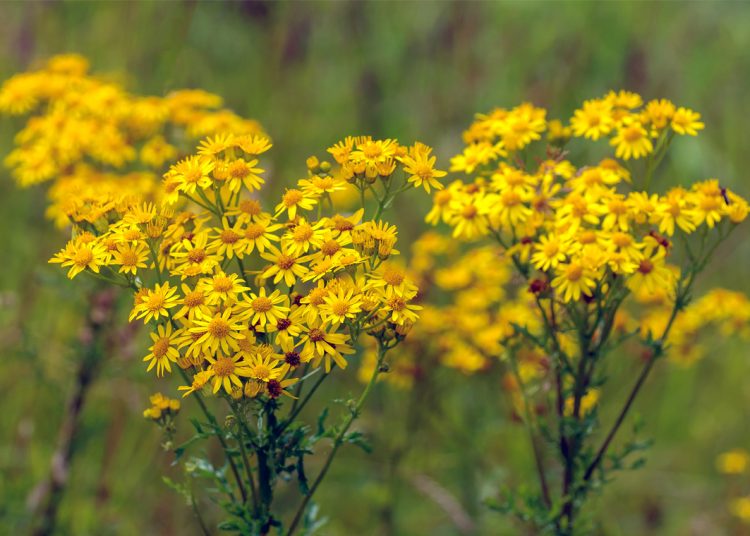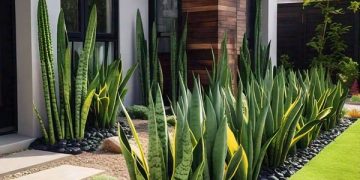Ragwort identification is crucial for anyone managing a garden, farm, or any green space. This invasive plant, known for its toxic properties, can be harmful to livestock and can spread quickly if not controlled. By learning how to identify ragwort, you can take the necessary steps to remove it before it becomes a problem.
What is Ragwort?
Ragwort (Jacobaea vulgaris) is a common perennial plant found in fields, pastures, and roadsides. It produces bright yellow flowers and can grow up to 1.5 meters tall. While it may look pretty, ragwort contains toxic compounds that can be fatal to livestock, especially when eaten in large quantities. It’s important to catch ragwort early before it goes to seed and spreads throughout your property.
Key Features of Ragwort
1. Leaf Shape and Size
Ragwort plants typically have deeply lobed, jagged leaves that grow in a rosette during the early stages of growth. As the plant matures, the leaves elongate and become more finely dissected. The leaves can range from 5 to 20 cm (2 to 8 inches) in length and are often dark green on the upper surface and lighter, sometimes silvery, on the underside. The leaf margins are often serrated, contributing to the plant’s distinctive appearance.

2. Flowering
Ragwort flowers are one of the most striking characteristics of the plant. The plant produces clusters of small, bright yellow, daisy-like flowers. These flowers typically have 13–21 petals and a dark central disc, giving them their typical daisy appearance. Flowering occurs in late summer or early autumn, and the blooms can last for several weeks. This flowering stage is often when ragwort is most easily identified.

3. Stem and Height
The stem of ragwort is typically tall, ranging from 30 cm to 1.5 meters (12 inches to 5 feet) in height, depending on the species and growing conditions. The stem is usually hollow, and the plant can become bushy with multiple flowering heads, giving it a relatively wide spread. The stem is often green, though it may have a reddish tint or be covered with fine hairs, especially in younger plants.

4. Roots
Ragwort species have deep taproots that allow them to survive in a variety of soil types. These roots can store nutrients, which helps the plant to re-sprout each year and can make it difficult to eradicate, especially when dealing with established plants.

Growth Cycle of Ragwort
Ragwort follows a biennial or perennial growth cycle, which varies depending on environmental factors. Understanding this cycle is important for effective management.
1. Germination (Spring)
Ragwort seeds germinate primarily in the spring, after winter dormancy. The seeds, which are small and lightweight, are spread by wind or animal movement. Once germinated, young ragwort plants begin to form a basal rosette of leaves. This early-stage growth focuses on root and leaf development.
2. Vegetative Growth (Spring to Summer)
In the first year of growth (for biennial species), the plant continues to focus on growing leaves and roots. The plant remains as a low-growing rosette, gathering energy from sunlight. The rosette’s leaves are the key to identifying ragwort at this stage, with their characteristic lobed shape and silvery underside.
3. Flowering and Seed Production (Late Summer to Fall)
In the second year (for biennial species), ragwort begins to grow upward, forming a tall, branching stem that will eventually produce its characteristic yellow flowers. As the flowers bloom, they are pollinated by insects, and seed production begins. Ragwort produces large quantities of seeds, which are then dispersed by wind.
4. Death and Reproduction (Fall to Winter)
After flowering and seed production, the plant typically dies back, completing its life cycle. The seeds are left to overwinter in the soil, where they will remain dormant until the next spring.
Ragwort Species
Several species of ragwort exist, but two of the most common are Senecio jacobaea (common ragwort) and Senecio vulgaris (groundsel). Each species has its own set of characteristics but shares some similarities.
1. Common Ragwort (Senecio jacobaea)
Common ragwort is the most well-known species of ragwort, notorious for its toxicity to livestock. It grows as a biennial or short-lived perennial and typically features bright yellow flowers that appear in late summer to early fall. It can be found in pastures, roadsides, and waste areas across temperate regions. Common ragwort is often toxic to cattle, horses, and other animals if consumed in large quantities, leading to liver damage.
2. Groundsel (Senecio vulgaris)
Groundsel is another ragwort species, though it differs from S. jacobaea in that it often grows as an annual. It has smaller, less pronounced flowers and leaves and generally does not grow as tall. Groundsel is common in disturbed areas, gardens, and agricultural fields. While not as toxic as common ragwort, it still contains alkaloids that can be harmful to livestock if ingested.
3. Other Species
Several other species of ragwort can be found in various regions, such as Senecio erucifolius (ragwort with feathery leaves) and Senecio bicolor (less common but still present in some areas). These species are less common but can have similar toxic effects on animals and should still be carefully monitored.
Managing Ragwort
Given its toxicity, managing ragwort is critical for livestock health and for preventing its spread. Here are a few common methods used to control ragwort:
- Manual Removal: Digging up ragwort by hand or using specialized tools to pull the plant, roots and all, can help prevent further growth. Care should be taken to dispose of plants properly since their seeds can continue to spread if left behind.
- Herbicide Use: Selective herbicides may be used in pastures or fields to target ragwort, but they should be applied carefully to avoid harming other plants or animals.
- Grazing Control: Rotational grazing can help manage ragwort growth. By limiting the areas where livestock graze, pasturelands may have time to recover and reduce ragwort proliferation.
- Preventing Seed Spread: Ensuring that ragwort does not go to seed by cutting back plants before they flower or by mowing them down regularly can help reduce the spread of this noxious weed.
Conclusion
Ragwort is an invasive and toxic plant that can cause significant harm to livestock if left unchecked. Understanding how to identify ragwort by its distinctive features, recognizing its growth cycle, and knowing the different species within the genus is essential for both land management and livestock protection. By staying vigilant and using appropriate management techniques, ragwort’s spread can be controlled, ensuring healthier environments for both wildlife and livestock.
















